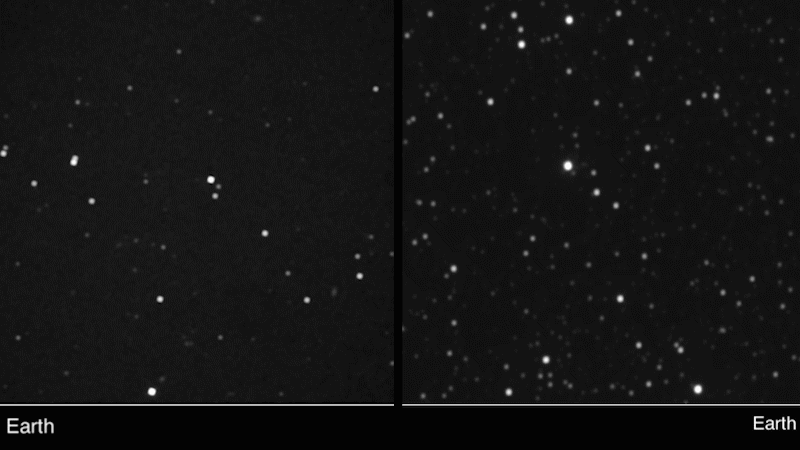
- NASA’s New Horizons probe was able to help measure the distance between two stars and our home system thanks to its distant location.
- The probe’s images of the stars were compared with images of those same stars shot from Earth, and researchers calculated the distances.
- One of the stars, Proxima Centauri, hosts planets that have long been of interest to astronomers as a potential future home for human colonists.
NASA has a lot of high-powered space-gazing hardware at its disposal. From ground-based telescopes to the orbiting eyes of Hubble, the space agency can direct its attention at just about whatever feature of the night sky it desires. The New Horizons probe, however, is offering NASA new opportunities for unique observations of the cosmos, and it’s capable of such feats because it’s nowhere near Earth at all.
As Nature explains in a lengthy new article, the New Horizons probe has managed to measure the distance between two distant stars thanks to its current position near the outer reaches of our solar system.
The trick to measuring distances of objects in space that are incredibly far away is to make observations from two distinct locations. The farther those two locations are from one another, the easier it is to draw it up. In this case, NASA observed two different stars — one called Wolf 359 and the other Proxima Centauri — from Earth and also from the New Horizons probe which has long since passed Jupiter and is now hanging out near the Kuiper Belt.
From Nature:
Because New Horizons is now 46 times farther from the Sun than Earth is, the two points of view are distant enough that the stars’ positions look slightly different with respect to other, more distant objects. By measuring that difference, astronomers can calculate the two stars’ distances from Earth.
Knowing the distance between New Horizons and Earth, and then comparing the images to see how much the stars moved compared to other objects in the distant background, researchers were able to use a technique called parallax to estimate the distances between the stars and Earth.

Being able to tell the distance between nearby stars and Earth is important for a number of reasons, not least of which is the fact that if we ever hope to become an interstellar species, we’re going to have to visit these places. At the moment, Proxima Centauri seems like a prime candidate.
Proxima Centauri is just over 4 light-years away from Earth. That’s still an incredible distance, and we most certainly don’t have the technology to even dream about visiting it right now, but in the future, well, who knows? The star is known to host at least two but possibly three (or more) planets. Scientists think the volatile nature of the star may negate any possibility that life has taken root on the planets that surround it, but we just don’t know for sure.







